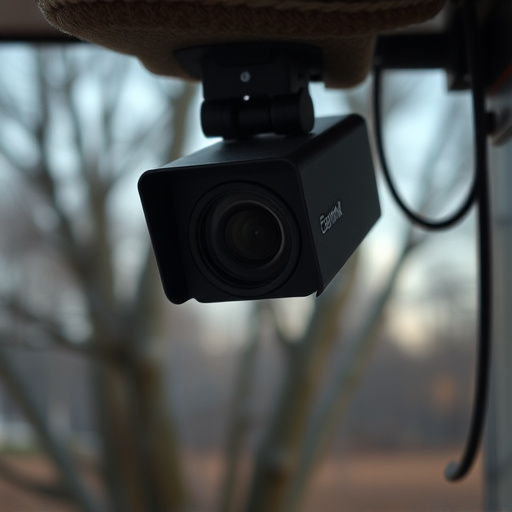Battery-powered spy cameras outdoors have evolved with compact design, rechargeable batteries, and IR technology. Their subtle nature makes them popular for discreet surveillance. Light reflection techniques, leveraging natural light and reflective surfaces, help expose these cameras by identifying unusual light patterns or flickers caused by camera LEDs or IR illumination. Security professionals use specialized equipment to detect these reflections, enhancing defense against unauthorized outdoor surveillance.
In the era of advanced technology, battery-powered spy cameras have become a growing concern for privacy. These devices, often hidden outdoors, pose significant threats to security. This article delves into an innovative detection method centered around light reflection techniques. We explore how understanding outdoor conditions and analyzing light patterns can help identify these clandestine cameras. By identifying reflected light anomalies, individuals can take proactive measures to safeguard their spaces from such intrusions.
- Understanding Battery-Powered Spy Cameras in Outdoors
- Light Reflection: A Potential Detection Method
- Identifying Reflected Light Patterns and Anomalies
- Advanced Techniques to Counter Spy Camera Placement
Understanding Battery-Powered Spy Cameras in Outdoors
Battery-powered spy cameras designed for outdoor use have become increasingly sophisticated, blending seamlessly into their surroundings to capture unseen footage. These devices are typically small, lightweight, and equipped with advanced sensors that enable them to record high-quality video and images. They operate on rechargeable batteries, allowing for extended monitoring periods without the need for frequent power sources.
Understanding how these cameras utilize light reflection is key to detecting their presence. Many outdoor spy cams employ infrared (IR) technology, which relies on reflecting ambient light to initiate recording. When a moving object or change in light patterns is detected via IR sensors, the camera activates, capturing footage that can reveal hidden activities. This subtle approach makes it challenging for users to identify these devices as surveillance equipment, making them popular choices for discreet monitoring in outdoor environments.
Light Reflection: A Potential Detection Method
Light Reflection: Unveiling Hidden Spys
In the ongoing battle against covert surveillance, especially with the proliferation of battery-powered spy cameras in outdoor settings, innovative detection techniques are crucial. One such method focuses on light reflection—a subtle yet powerful tool in exposing these hidden eyes. When a spy camera is installed, it often utilizes infrared or other low-light sensors to capture footage undetected. However, natural or artificial light can be harnessed as a countermeasure. By strategically directing and manipulating light sources, one can create patterns that reflect off surfaces, potentially revealing the presence of these tiny cameras.
This technique takes advantage of the fact that spy cameras, despite their advanced features, often struggle to process bright reflections accurately. The reflected light may disrupt the camera’s normal operation, leading to distorted images or even false triggers. For outdoor settings, where sunlight is abundant, this method can be particularly effective. By reflecting sunlight onto walls, fences, or other objects nearby, anyone vigilant enough might spot unusual glints or flickers, indicating the location of a hidden battery-powered spy camera.
Identifying Reflected Light Patterns and Anomalies
Identifying Reflected Light Patterns and Anomalies is a crucial step in detecting battery-powered spy cameras, especially in outdoor settings. When a spy camera is activated, it emits light that reflects off various surfaces around it, such as foliage, walls, or even the sky. By analyzing these reflections, experts can uncover telltale signs of hidden surveillance. Unusual patterns, flickering lights, or sudden changes in brightness can indicate the presence of an invisible eye peering from a distance.
Anomalies in light reflection often reveal the camera’s position and operation. For instance, if a specific area shows consistent dimming or a distinct shadow, it might suggest a hidden lens aiming directly at that spot. Outdoor environments, with their dynamic lighting conditions, can present unique challenges. Reflections may dance across surfaces, creating intricate patterns that change with the sun’s movement, wind-blown debris, or even water droplets on leaves. Detecting deviations from these natural variations could lead to the discovery of covert surveillance devices like battery-powered spy cameras.
Advanced Techniques to Counter Spy Camera Placement
With the proliferation of battery-powered spy cameras, outdoor spaces have become a breeding ground for covert surveillance. To counter this growing threat, advanced techniques are emerging to detect and deter such devices. One innovative method involves analyzing light reflections, leveraging the fact that many spy cameras use LED indicators or infrared illumination, which can leave distinctive reflection patterns on surfaces. By employing specialized equipment and algorithms, security professionals can identify these subtle reflections, pinpointing the exact location of hidden cameras.
This reflexion-based approach is particularly effective in outdoor settings, where natural light variations and reflective surfaces like glass, metal, and water bodies can act as powerful allies in camera detection. Additionally, combining this technique with regular visual inspections and using physical barriers or decoys designed to reflect light unpredictably can create a multi-layered defense, making it significantly harder for unauthorized spy cameras to remain hidden.
The detection of battery-powered spy cameras outdoors has evolved from traditional methods to advanced light reflection techniques. By understanding how these devices operate and leveraging the power of reflected light, individuals can now identify and counter potential privacy threats effectively. While this method offers a promising solution, continuous innovation is necessary to stay ahead of stealthy camera placements, ensuring outdoor spaces remain secure and private.
